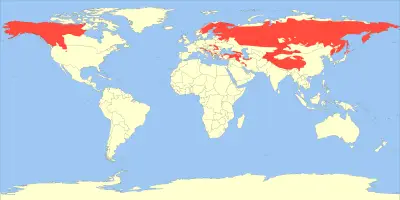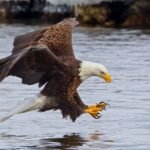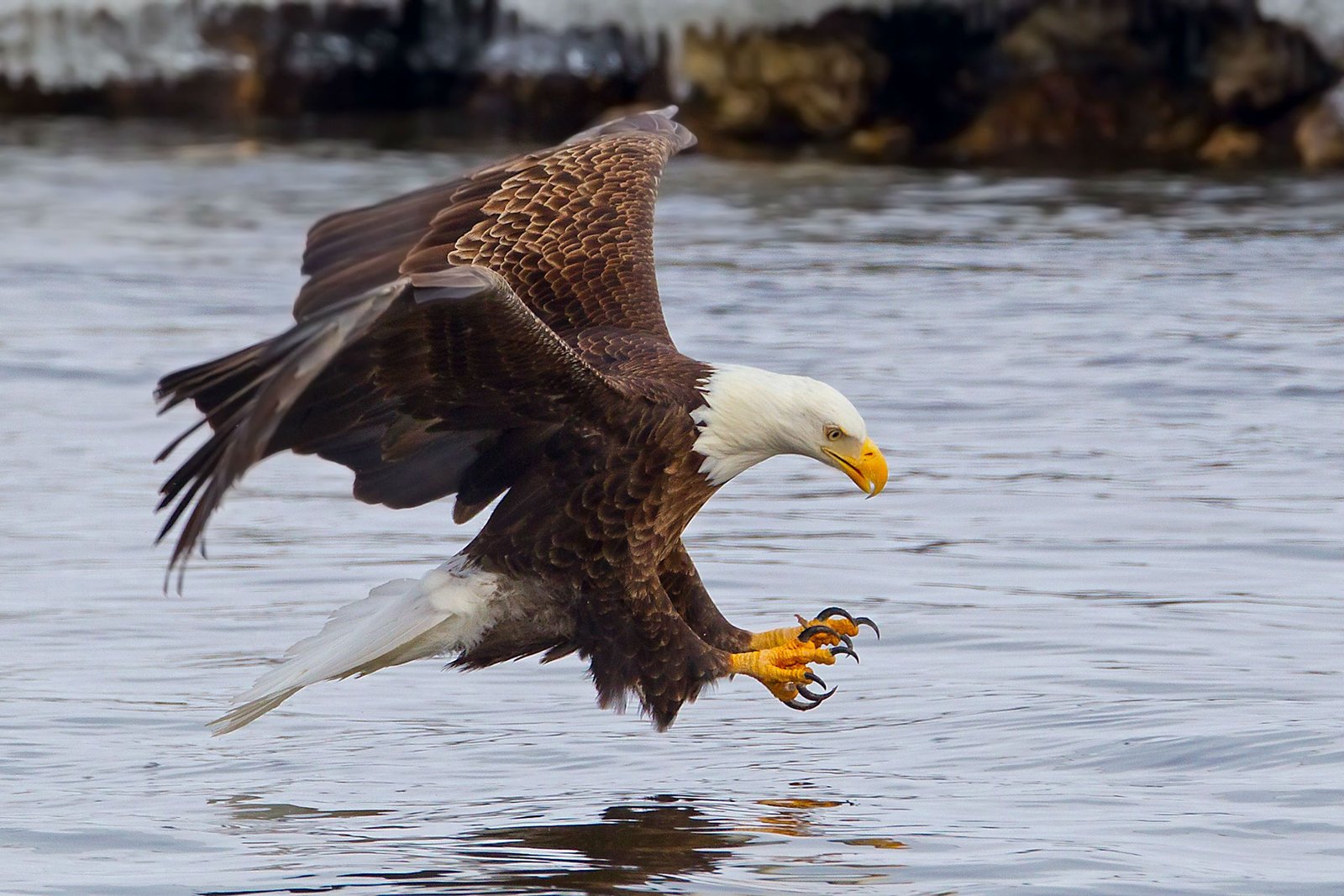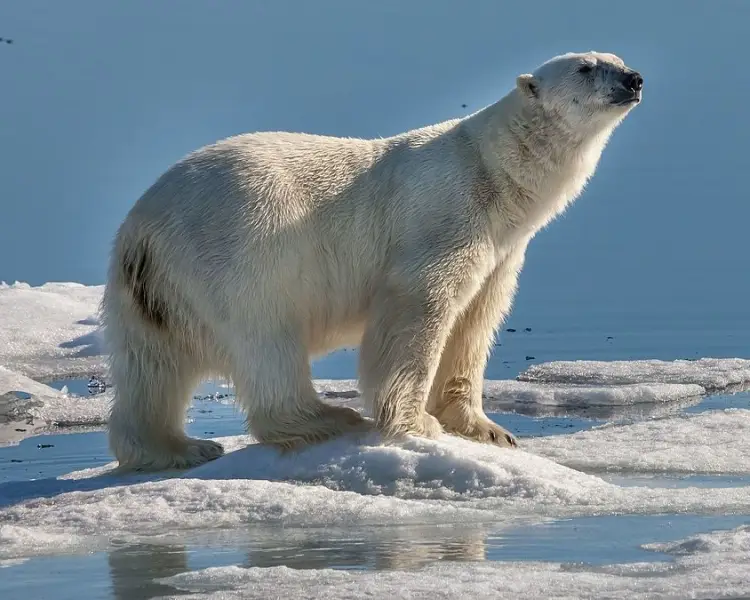The Brown bear (Ursus arctos) is a large bear species found across Eurasia and North America. In North America, the populations of Brown bears are called Grizzly bears, while the subspecies that inhabits the Kodiak Islands of Alaska is known as the Kodiak bear. It is one of the largest living terrestrial members of the order Carnivora, rivaled in size only by its closest relative, the Polar bear (Ursus maritimus ), which is much less variable in size and slightly bigger on average. The Brown bear is recognized as a national and state animal in several European countries.
Appearance
The Brown bear is a large mammal with a notable hump of muscles over its shoulders. Its legs are strong with huge paws. The claws are rather long on the front feet, allowing Brown bears to dig their dens as well as dig for food. The ears are relatively small and the face is concave while the head is large with powerful jaws. Brown bears have the ability to stand and walk on their hind legs; they do so in order to determine the location of a food source or to identify a threat. These animals have thick coats, varying in color from black to brown and blonde. The guard hair is longer, sometimes having white tips, which gives them a grizzled appearance.
Distribution
Geography
- Continents : Asia, Europe, North America
- Subcontinents : South Asia, Western Asia, East Asia
- Countries : Albania, Armenia, Austria
- Biogeographical realms : Nearctic, Palearctic
Brown bears are found in very small numbers from North America to Western Europe, Palestine, Eastern Siberia, and the Himalayan region. The habitat of these animals is usually riparian areas. They prefer to live along rivers and streams in prairies, alpine meadows, woodlands, and forests.

Habits and Lifestyle

Brown bears are territorial animals, leading solitary life. They usually forage in the mornings and evenings, resting in cover by day; however, they are active at any time of the day. They spend the winter months in dens, entering a dormant state. Brown bears are not full hibernators, so can be woken at any time. Their dens are usually caves, hollow logs, or crevices. From time to time, Brown bears congregate into large groups to feed. The groups have a social hierarchy system, based on age and size. With the coming of autumn, some individuals travel very long distances in search of a suitable source of food. In order to communicate with each other, Brown bears produce various vocalizations.










